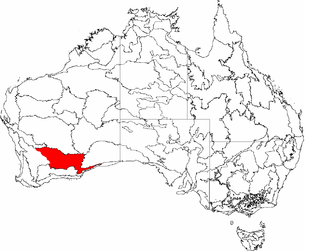
Ficus fraseri, the white sandpaper fig or shiny sandpaper fig, is one of several fig species commonly known as sandpaper figs. It is native to New South Wales, Queensland and the Northern Territory in Australia and to New Caledonia and Vanuatu. Other common names are "figwood" and "watery fig".
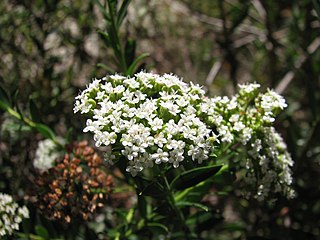
Platysace lanceolata, commonly known as shrubby platysace, is a shrub species that is native to south-eastern Australia. It grows to 1.5 metres high and has leaves that are 10 to 50 mm long and 4 to 5 mm wide. Plants produce umbels of small white 5-petalled flowers between December and February in the species native range.

Cuscuta australis, commonly known as Australian dodder, is a herb in the Convolvulaceae family.

Amyema bifurcata is an epiphytic, flowering, hemiparasitic plant of the family Loranthaceae native to Australia and found in Western Australia, the Northern Territory, Queensland and New South Wales.

Amyema gibberula is an aerial hemiparasitic plant of the family Loranthaceae native to Australia and found in Western Australia, the Northern Territory, and South Australia.
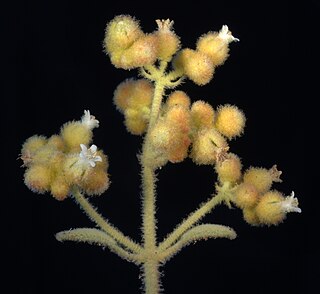
Dicrastylis exsuccosa is a species of plant within the genus, Dicrastylis, in the Lamiaceae family. It is endemic to inland Australia and found in Western Australia, the Northern Territory and South Australia.

Opercularia echinocephala is a species of plant within the genus, Opercularia, in the Rubiaceae family. It is endemic to the south-west of Western Australia.

Maireana pyramidata is a species of plant within the genus, Maireana, in the family Chenopodiaceae. It is endemic to Australia, and widespread throughout Australia in the inland, where it is found in Victoria, New South Wales, Queensland, the Northern Territory and Western Australia.

Amyema melaleucae, also known as the tea-tree mistletoe, is a species of flowering plant within the genus Amyema, an epiphytic hemiparasitic plant of the family Loranthaceae native to Australia and found in Western Australia and South Australia on the coast, from north of Perth almost to the Victorian border.
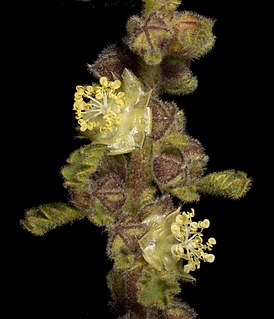
Lawrencia densiflora is a species of plant in the mallow family, Malvaceae. It is endemic to Western Australia

Lawrencia squamata is a species of plant in the mallow family, Malvaceae. It is endemic to Australia and occurs in all Australian states.

Boronia lanuginosa is a plant in the citrus family Rutaceae and is endemic to northern Australia. It is a shrub with woolly pinnate leaves.

Trachymene ornata, or spongefruit, is a slender annual herb in the family Araliaceae. It is native to Australia and found in Western Australia, South Australia and New South Wales.

Kennedia lateritia is a species of flowering plant in the family Fabaceae, endemic to the south-west of Western Australia.

Bossiaea rupicola is an erect shrub in the pea family (Fabaceae), which is native to Queensland and New South Wales.

Bossiaea stephensonii is a perennial multistemmed shrub in the pea family (Fabaceae), and is native to New South Wales.

Isopogon longifolius is a small shrub in the Proteaceae family that is endemic to the southwest of Western Australia.
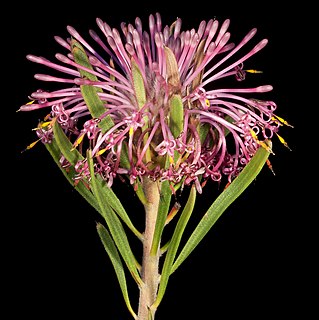
Isopogon linearis is a small shrub in the Proteaceae family that is endemic to the south-west of Western Australia.
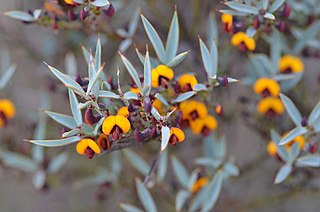
Daviesia nudiflora is a shrub in the Fabaceae family. It is endemic to Western Australia. There are three accepted subspecies:

Bertya gummifera, is a sticky shrub in the Euphorbiaceae family, endemic to New South Wales. It grows in woodland and often in sandstone areas. It flowers in spring.






